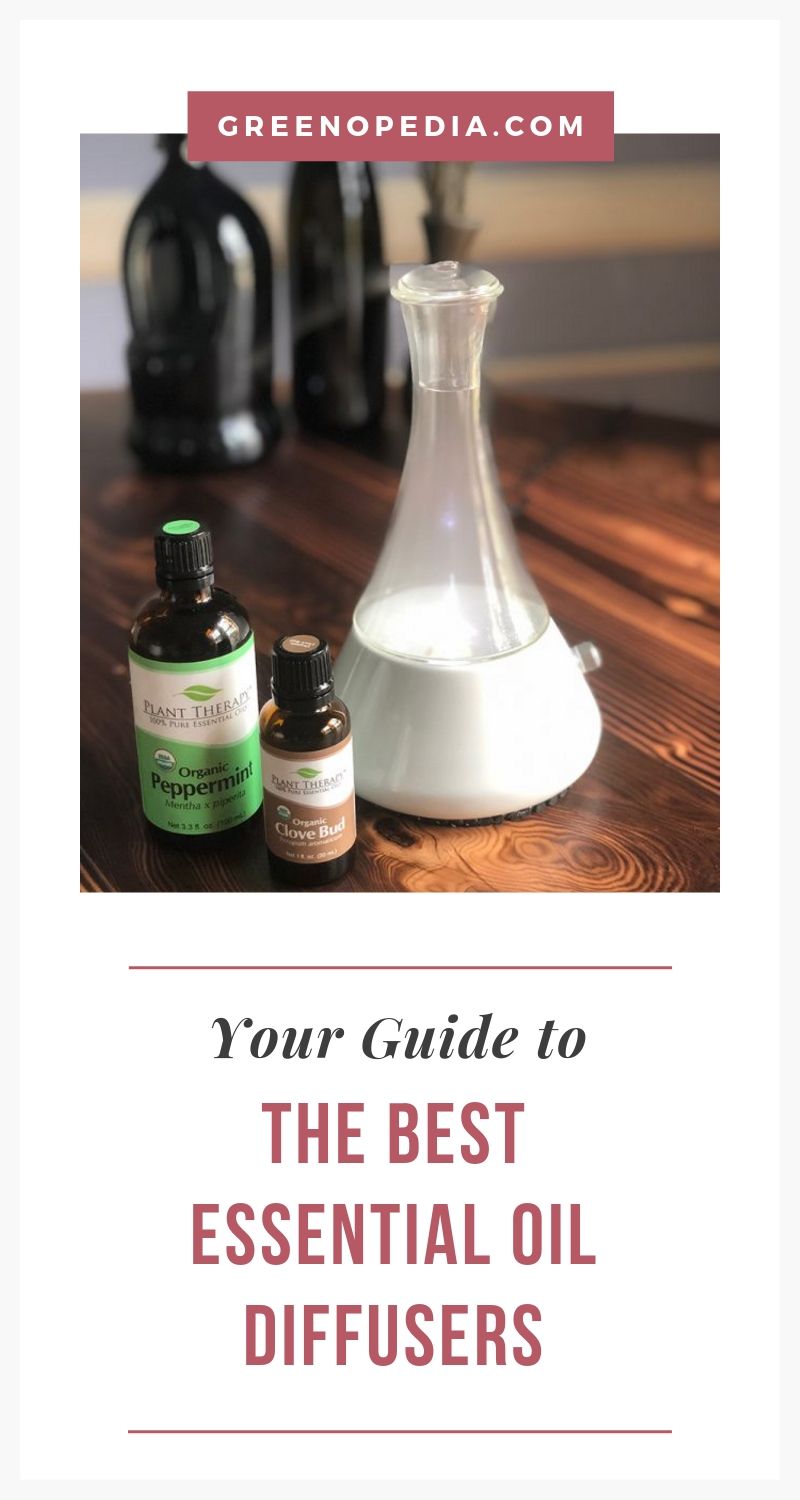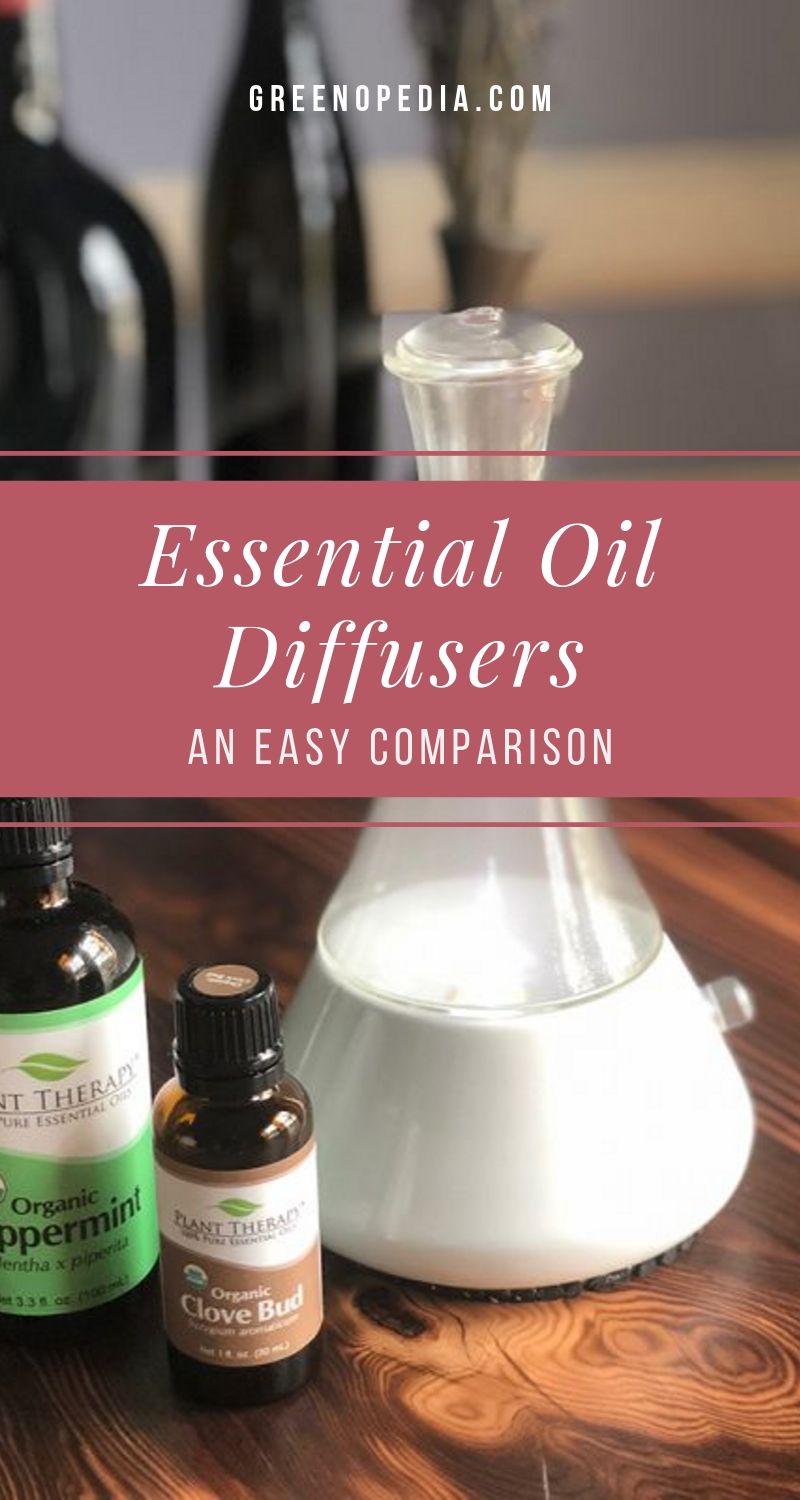Friends always comment on how good my house smells, even if I haven’t cleaned! My secret is that I diffuse essential oils around my home — almost obsessively. Obviously, I love the way they smell. But I also love how they make me feel.
And it’s not just me. The aromatic compounds in essential oils have been scientifically proven to combat illness, enhance mood, promote sleep, and more. Scientific testing aside, I feel a noticeable difference when I diffuse essential oils.
If I’m a little under the weather I’ll throw in a blend of eucalyptus, lemon, cinnamon, and clove essential oil. Feeling a little anxious? Lavender and chamomile. A little sleepy? Peppermint and grapefruit. The list goes on.
Essential oil diffusers
I’ve experimented with various ways to permeate my home with essential oils over the years and I’ve found that some methods definitely work better than others. Ultimately, my favorite is the nebulizing diffuser with my ultrasonic diffuser ranking a close second.
While I did use candle diffuser all the time when I first discovered aromatherapy — and I’d try out different evaporative diffusers every once in a blue moon — I traded in both a few years ago for the higher quality (and yes, a bit pricier) electronic options, once I learned about the difference in health benefits.
With that in mind, I’ll give you the quick low down on what I’ve learned about each type of diffuser with regards to what works… and what doesn’t.
Also read: How To Find High-Quality Essential Oils and How To Use Them Safely

Nebulizing diffusers (my #1 favorite)
Nebulizing diffusers use ‘atomizers’ to break the essential oil into fine particles. Pressurized air disperses the resulting micro-mist of oils into the environment. Unlike the other types of diffusers, nebulizers don’t use heat or water, so the essential oils remain pure and powerful.Essential oils can break down plastic, so you don’t want the two to touch. (Drugstore diffusers are often made from plastic.) The plastic parts of a high-quality nebulizing diffuser are limited to the on/off knobs or other small components that do not come into contact with the oil itself.
Nebulizing diffusers are easy to use and their effects are long-lasting. With some models, you drop the essential oils directly into the glass tub and refill, as needed. Others are made so that you can attach the bottle directly to the diffuser and it’ll refill itself. Either way, the tiny particles of oil will remain suspended in the air for hours. So even just 15 to 30 minutes of nebulizing will provide hours of benefit.
Ultrasonic diffusers (my second favorite)
Heat can alter the therapeutic properties of the oil, which is no bueno. Instead of heat, ultrasonic diffusers use electronic frequencies (i.e. vibration) to release a fine mist of water + essential oils into the air.
Another upside is that, because ultrasonic diffusers also mist water into the air, they are helpful in winter and in dry environments, where you would use a humidifier. The (slight) downside is that the water dilutes the essential oil and, in turn, its therapeutic benefits. That said, you can run the diffuser for as long as you’d like, so I wouldn’t exactly rule this a deal breaker.
The other thing to keep in mind is that many ultrasonic diffusers are made from plastic. As I mentioned earlier, essential oils are corrosive to plastic, so stick to diffusers that hold the oil in ceramic or glass.
Candle diffusers (heat)
One way to diffuse EOs is by adding a bit of water and a few drops of the oil into a small ceramic bowl. Light a tea candle underneath — or turn on the switch, if it’s electronic. Once it’s warmed, the oil’s aroma will release into the air.
The two main upsides of heat diffusers are that they are inexpensive and they can quickly disperse the oil’s scent through a small room. One major downside, however, is that it’s way too easy to burn the oil. I’ve done this countless times, either because the wick on my candle was too long (causing the flame to be too big) or by not paying attention and leaving the candle to burn long after the water was gone.
The other downside is that the heat (even when it’s just warm and not burnt) can chemically alter the therapeutic properties of essential oils. Obviously, that’s not ideal.
Evaporative diffusers
 You can also evaporate essential oils by adding a few drops into a pretty glass jar or vase, along with some carrier oil (such as jojoba oil) to help fill the container and spread the oil. Just add a few wooden reeds to draw the essential oils from the glass and into the air.
You can also evaporate essential oils by adding a few drops into a pretty glass jar or vase, along with some carrier oil (such as jojoba oil) to help fill the container and spread the oil. Just add a few wooden reeds to draw the essential oils from the glass and into the air.
Evaporative diffusers are beautiful and inexpensive. The downside is that they are not terribly effective or long-lasting.
Also, I’ve seen these evaporative diffusers sold with the essential oils already in the jar. Since the jar is clear, light can shine through and who knows how long it’s been sitting on the shelf. Light can age an essential oil more quickly, causing it to lose its therapeutic benefits.
Reaping the health benefits of aromatherapy
Aromatherapy has made a noticeable impact in relieving my headaches and elevating my mood. Plus, I just love the way it makes my house smell. So for me, investing in a quality diffuser has been a no-brainer.
As a quick reminder of the benefits, diffusing high-quality essential oils has been found to:
- Purify indoor air
- Reduce stress, anxiety, and depression
- Promote relaxation and restful sleep
- Improve mood
- Boost energy levels
- Clear brain fog and improve mental clarity
- Relieve headaches
Whether you’re using individual scents or creating your own unique blends, reaping the emotional and physical health benefits couldn’t be easier… or more enjoyable.
- Research
- http://hopewelloils.com/safety.php
- https://naha.org/assets/uploads/The_Quality_of_Essential_Oils_Journal.pdf
- https://www.attia.org.au/get_library.php
- https://www.doterra.com/US/en/essential-oil-safety-and-application-sensitivity-reactions-assess-sensitivity
- https://www.doterra.com/US/en/essential-oil-production-distillation-solvent-extract
- http://tisserandinstitute.org/safety/irritation-allergic-reactions/
- http://info.achs.edu/blog/debunking-dangerous-myths-about-essential-oils
- https://hopewelloils.com/chemical-sensitivity.php(testimony#2atthebottom)
- https://naha.org/explore-aromatherapy/about-aromatherapy/how-are-essential-oils-extracted
- http://tisserandinstitute.org/highs-lows-gc-ms-essential-oil-analysis/
- https://onlinelibrary.wiley.com/doi/pdf/10.1111/1541-4337.12006
- https://www.ncbi.nlm.nih.gov/pubmedhealth/PMH0032518/
- https://www.ncbi.nlm.nih.gov/pubmedhealth/PMH0032645/
- https://www.mayoclinic.org/healthy-lifestyle/consumer-health/expert-answers/aromatherapy/faq-20058566
- https://www.ncbi.nlm.nih.gov/pmc/articles/PMC5206475/
- https://www.ncbi.nlm.nih.gov/pmc/articles/PMC4483703/
- https://www.ncbi.nlm.nih.gov/pmc/articles/PMC3346404/
- https://www.ncbi.nlm.nih.gov/pmc/articles/PMC4170112/
- https://www.ncbi.nlm.nih.gov/pmc/articles/PMC3854496/
- https://www.ncbi.nlm.nih.gov/pmc/articles/PMC1360273/
- https://www.ncbi.nlm.nih.gov/pmc/articles/PMC5435909/
- https://www.ncbi.nlm.nih.gov/pmc/articles/PMC5327916/
- http://www.scielo.br/pdf/rbca/v18n4/1516-635X-rbca-18-04-00629.pdf
- https://www.oilsandplants.com/solventextraction.htm
- https://scdlifestyle.com/2010/04/phenols-and-salicylates-what-they-are-and-why-it-matters/
- http://authorscott.com/salicylate-sensitivities-essential-oils-need-know/
- https://bmccomplementalternmed.biomedcentral.com/articles/10.1186/1472-6882-6-39
FREE DOWNLOAD
Natural Living Guide
Find practical tips & natural alternatives to the everyday chemicals that invade our lives.
















